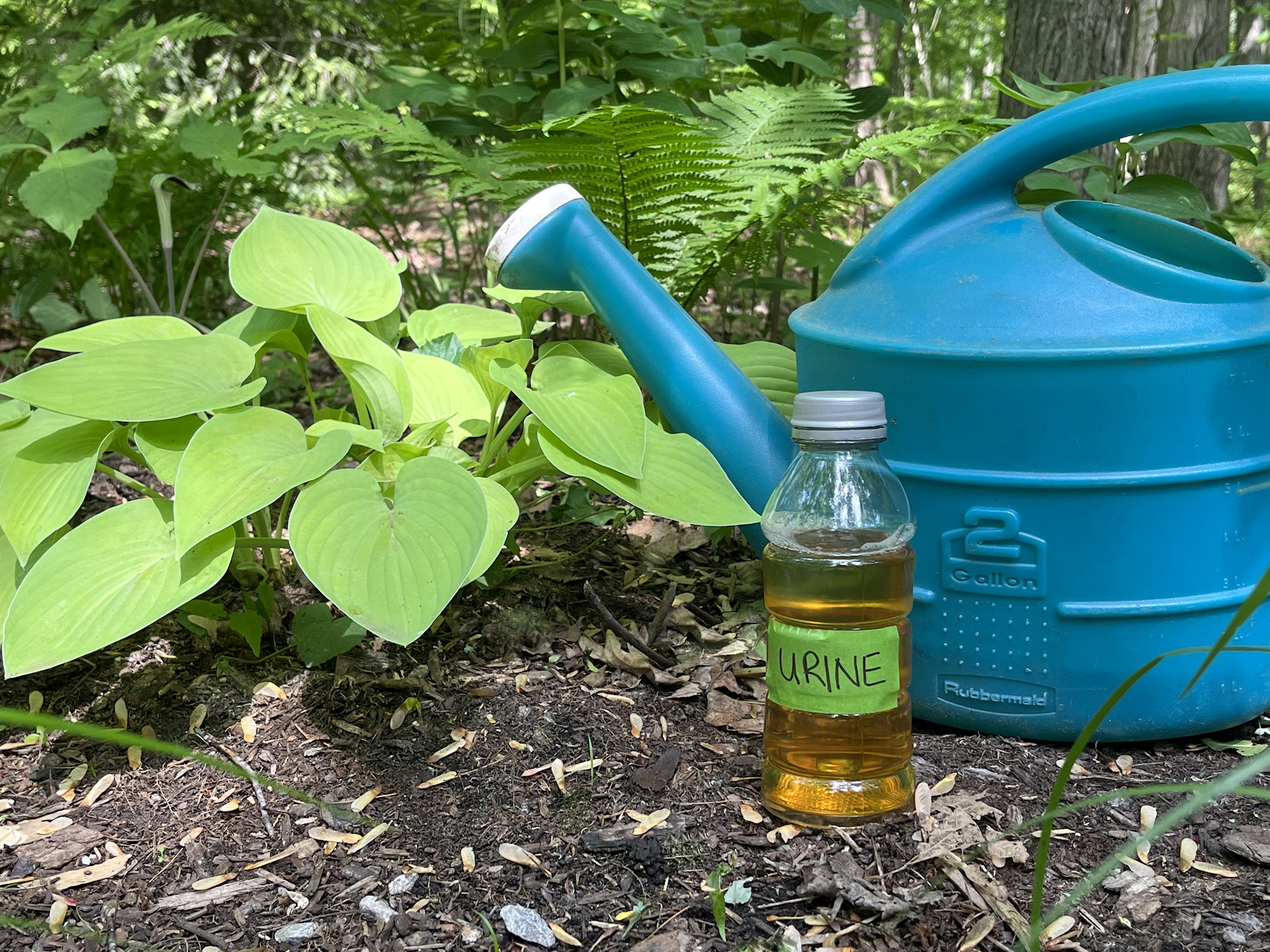
Preparing for urine diversion to fertilze.
American Chemical Society | Industry | Industry Matters Newsletter | Limits to Circular
Limits to Circular
Industry Matters Newsletter 16 June 2022
I’ve frequently tested my limits and my wife’s patience in my quest to be more sustainable. Pulling something out of the trash she’s just thrown away because it is recyclable always gets at least an eyeroll. Recent reporting prompted me to explore a new type of recycling. Reducing reliance on industrially produced fertilizers seemed like an idea worth exploring to me. Only half of my two-person household agreed. My investigation reaffirms that just because you can do something, it doesn’t mean you should.
Reading about two University of Michigan professors “pee for peonies” urine diversion to fertilize plants struck me as impractical as I read it. Not one comfortable with rash decisions, I decided to do a little research before dooming the idea.

Preparing for urine diversion to fertilze.
Nitrogen, phosphate and potassium are necessary plant nutrients. The
three numbers on the bags of fertilizer tell the percentages of nitrogen,
phosphate as equivalent P2O5, and potassium as K2O. These three nutrients
are also found in human urine. Urine contains most of the nutrients we
excrete, more than 70% of
the nitrogen, in excess of 50% of the phosphorus and about
90% of the
potassium.
Nitrogen,
phosphorus, and
potassium all have natural cycles, cycles we’ve disrupted. Modern
agriculture depends on industrial inputs of all three key nutrients.
Phosphorus is supplied to agriculture as phosphate from mining. Same for
potassium or potash. Nitrogen is a chemical product, supplied as ammonia
made from air. All three key nutrients are the products of energy
intensive processing. By most accounts, ammonia production is the
largest CO2 emitter from the chemical industry. The environmental concern
doesn’t stop at production. Fertilizer lost to runoff damages ecosystems.
Nitrogen oxides released to the air are
potent greenhouse gases. Modern wastewater treatment lets nutrients
escape. We end up literally pissing the key nutrients away. The
result is damage to
watersheds.
Fertilizers are globally traded commodities. Russia and Belarus are major
suppliers, now subject to embargoes. Together the two countries account
for about
37% of potash production, about
10% of
ammonia and about
1% of phosphate.
They represent a larger
fraction of the export market, causing concerns about shortages in many
countries.
Urine can, when recycled, address fertilizer production, supply chain issues,
and damaging loss to the environment. Urea is the
second largest
component of human urine after water, making up to 2.5% by some accounts.
Urea is an effective fertilizer, able to replace industrially produced ammonia.
Other nutrients are at lower levels, with potassium being about 0.6% and
phosphate at 0.1%. Life-cycle assessments
demonstrate benefit of
urine as fertilizer, but ignore the capital intensity and logistical issues.
Urine comes with a bit of a
yuck factor. It isn’t completely warranted. Thanks to the
osmotic filtering in the kidneys, urine from a healthy human,
while not sterile, doesn’t contain many dangerous micro-organisms.
Collecting and fertilizing diluted urine is touted by many. Love and
Wigginton, the intrepid Michigan professors, are not the first to recognize the
potential in urine. Community collection was
demonstrated and shown beneficial in hay production, as one example.
“Pee for peonies” uses
imported Vermont urine, leveraging an existing program and highlighting the
logistical challenges of local collection.
My testing was decidedly less involved. Urine diversion via a juice bottle
proved easy enough, at least for half of my household. In round numbers, I
produced about 1.7 L of urine a day. Focusing only on the urea, necessary
for greening my lawn, I was
collecting about 25
grams a day, using one of the higher, peer reviewed concentration estimates.
Dog urine, known to damage plants, and human urine are similar in
composition. To be safe, I diluted my urine 10:1 before using it around
the yard. I can buy a 50-pound bag of urea for $35. At that price,
my urine collecting efforts are worth about 4¢ a day in fertilizer. I
avoid a couple of cents of water use through avoided flushing. I’m saving
less than a dime a day.
My yard’s yearly fertilizer needs could be met if all household urine for a year
were diverted. Storage for at least 500 liters during the winter is not a
pleasant proposition, something necessary given year-round production and
seasonal use. Urine releases ammonia when it degrades, causing a stink.
Treatment with either acid or base stabilizes the urine. Some say
sterilization is also required. Urine storage and stabilization, even at
the household scale, just doesn’t make economic sense and it is a lot of
unpleasant work.
Ideally, the nutrients in my urine would be recycled to produce food I consume.
Those who have looked at the infrastructure requirements, from
diverting toilets to the
energy required to
concentrate the urine to an economically applied fertilizer, conclude it is
impractical. Urine diversion can be done and is environmentally
responsible, yet is difficult to implement economically at scale.
Recycle of urine, while certainly possible, has yet to reach the threshold of
practical. I also can’t tell any difference in my yard. Fertilized and
unfertilized areas are identical after my short test. I’ve ceased peeing
in bottles and returned to flushing. Eye-rolling is now back to
pre-diversion levels.